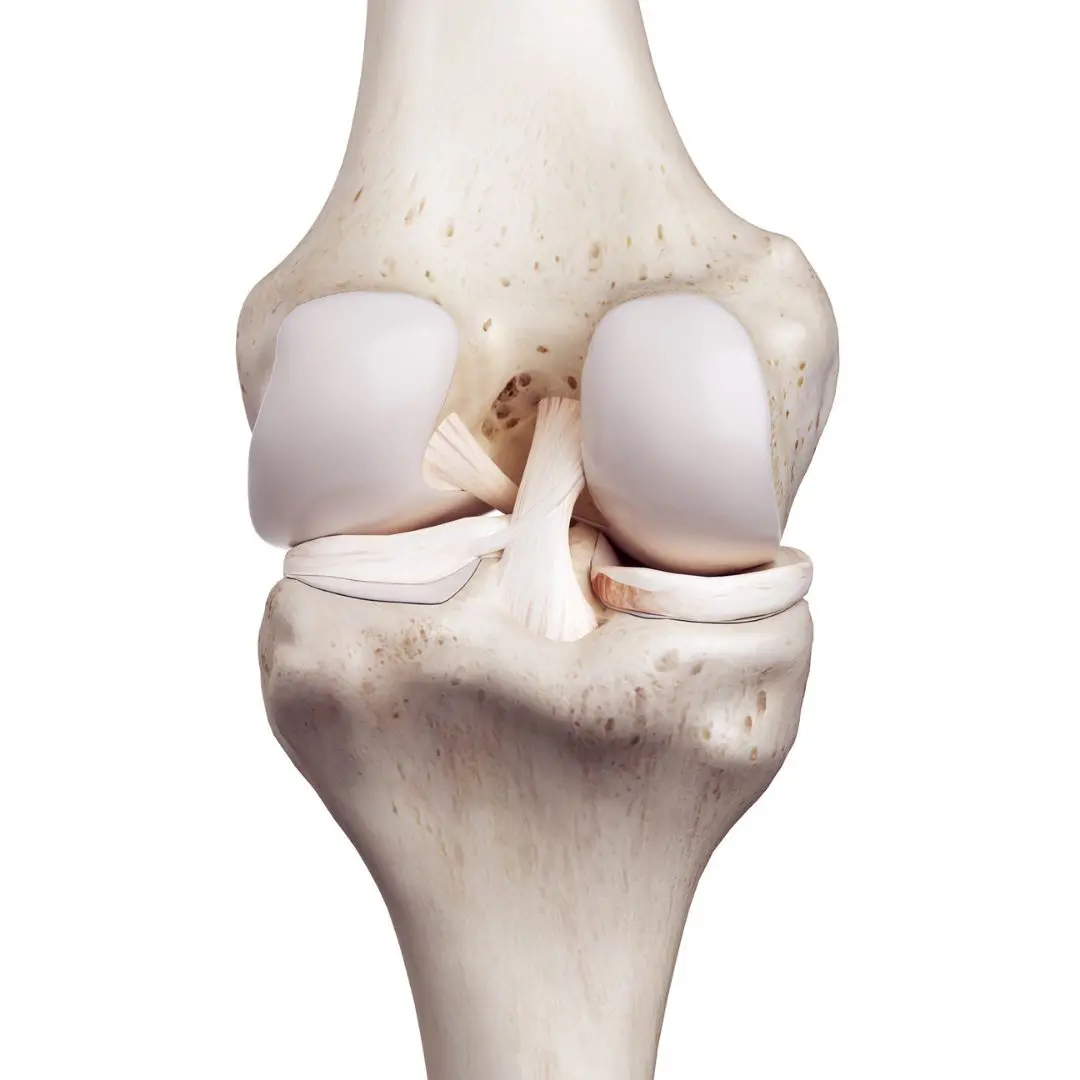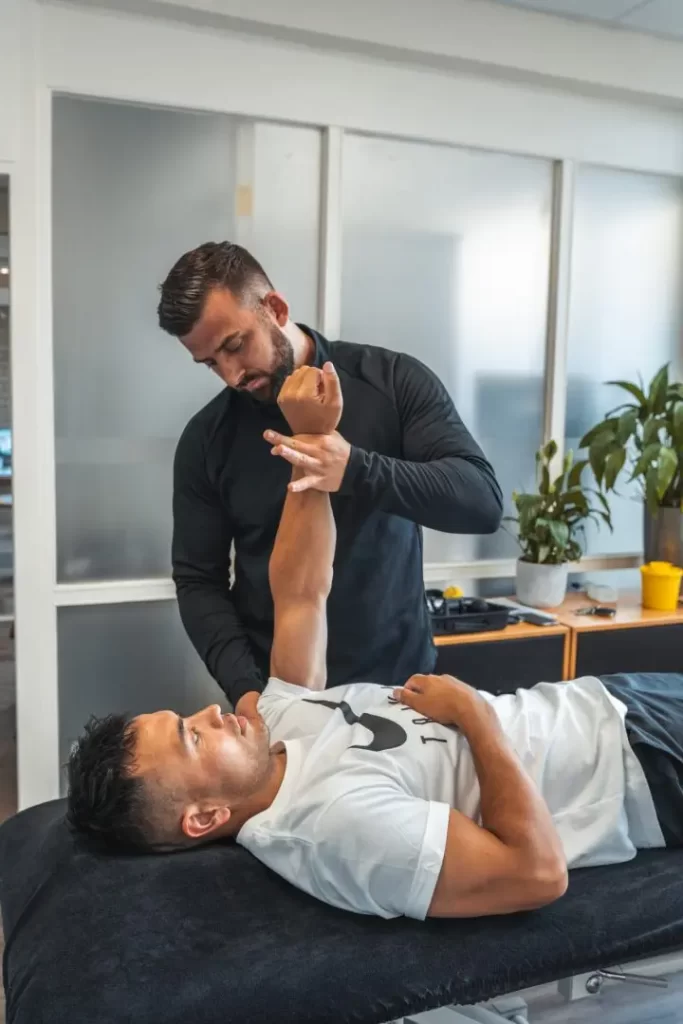Joint complaints
Joint pain is a common cause of complaints and restriction of movement. Joint pain can range from mild irritation to severe impairments that can affect daily activities.
Joint complaints can result from overuse, specific injury, as well as wear and tear (osteoarthritis) or more general conditions such as rheumatoid arthritis. Without treatment, these symptoms can worsen and lead to stiffness, swelling and loss of function. Even simple actions such as walking or simply climbing stairs can then be a challenge.
Early detection is important to reduce symptoms. At Physio Fitaal in Tilburg we work with a targeted approach to reduce pain and restore joint flexibility. Together, we make sure you can resume daily activities with more confidence.

Cause
Joint complaints are caused by several factors. It is important to fully understand the cause of the complaints so that the right treatment can be targeted. Joint complaints can be divided into those that develop slowly or gradually or those that can occur acutely.
Progressive causes of joint pain
Gradual complaints often arise from long-term strain, wear and tear or repeated minor irritations that eventually lead to bigger problems.
Overload: With repeated movements or prolonged pressure on a joint, the joint can become irritated. This can lead to pain, stiffness and sometimes irritation.
An obvious example is tennis elbow caused by repetitive arm movements while doing chores or knee pain in runners who want to cover too many miles too soon.
Wear and tear (osteoarthritis): Natural ageing or long-term strain can wear down the cartilage in the joint, causing bones to move less smoothly over each other. This leads to stiffness, pain and, in some cases, deformation of the joint. The knees, hips and hands are particularly often affected.
Standoffs: a different position of the joints due to, for example, a leg length difference or X- and O-legs, can affect joint strain. In this, however, it is important to emphasise that variation in body position is normal and does not always cause complaints. In most cases, a slight leg length difference of 1 to sometimes even 2 centimetres has no noticeable impact on joint load or function. When the deviation is larger than normal or occurs in combination with other factors, it can lead to excessive mechanical pressure on the joints.
Common Joint complaints

Trigger finger treatment
Are you experiencing pain, stiffness or a 'clicking' sensation in your finger or thumb? If so,...

Bursitis
Bursitis is a common musculoskeletal complaint involving a bursa, a fluid-filled...

Peroneal Tendinopathy
Peroneal tendon injury or, tendinopathy is an often overlooked condition that affects the tendons...


Throwing elbow
In a pitcher's elbow, there is particularly pain on the inside of the elbow.

Tennis elbow (Epicondalgia lateralis)
Tennis elbow is an overuse syndrome of the extensors in the wrist

Osteoporosis
At the point when bone density is reduced, osteoporosis (osteoporosis) may possibly occur.
Risk factors for joint pain
In the medical world, a risk factor a characteristic or behaviour that increases the likelihood of a complaint, disease or health problem.
Joint complaints are influenced by several factors. Some factors such as age and genetic predisposition cannot be changed. Others are. Consider obesity, physical strain and lack of exercise. These are things that can be modified to lower the risk of complaints.
Obesity is one of the main modifiable risk factors. In addition, fat cells produce inflammatory substances that cause inflammation in the joints. Weight control can reduce strain and reduce the risk of symptoms.
Physical strain from work or daily activities can also contribute to complaints. Heavy jobs increase the likelihood of complaints.
Sport and exercise are essential for good health but can also cause joint problems. Intense sports with rotational movements and high-impact moments, such as football or rugby, can lead to injuries. These are usually more acute injuries such as an anterior cruciate ligament injury.
In addition, genetic predisposition plays a role. Hereditary conditions such as rheumatoid arthritis, gout or early osteoarthritis can increase the risk of joint complaints. Also as mentioned earlier, abnormalities in the position of joints can disrupt the load and cause long-term symptoms.
Gradations of joint pain
Joint complaints can be classified in several ways. One of these is osteoarthritis:
The severity of osteoarthritis is often assessed by an X-ray photo with an accompanying Kellgren-Lawrence classification, which has five grades:
- Grade 0: No visible osteoarthritis.
- Grade 1: Possible incipient changes, such as slight joint gap narrowing.
- Grade 2: Mild osteoarthritis with marked joint gap narrowing and incipient osteophytes (bone protrusions).
- Grade 3: Moderate osteoarthritis with marked osteophytes and further joint gap narrowing.
- Grade 4: Severe osteoarthritis with large osteophytes, almost complete loss of joint gap and joint deformity.
General anatomy of a joint
A joint is where two or more bones meet and allow movement relative to each other. Joints are an important part of the musculoskeletal system and support the body while performing a variety of daily activities. The anatomy of a joint is complex and consists of different structures that work together to enable smooth and controlled movement.
The anatomy of the joint
- Cartilage:
Cartilage covers the ends of the bones in a joint. This smooth, elastic tissue reduces friction and absorbs shock during movements. Without cartilage, bones would rub directly against each other, causing pain and wear and tear. - Joint capsule:
This firm, fibrous shell surrounds the joint and holds the bones in place. The joint capsule provides stability and protection and helps to support the structures within the joint. - Synovial membrane:
The inside of the joint capsule is lined with a thin layer of tissue called the synovial membrane. This membrane produces synovial fluid, which acts as a lubricant to reduce friction in the joint and nourish the cartilage. - Synovial fluid:
This liquid lubricant fills the joint cavity and ensures smooth movements. It protects the joint from excessive wear and tear and plays a role in removing waste products from the cartilage. - Ligaments:
Strong, elastic ligaments of connective tissue connect bones and provide joint stability. Ligaments prevent a joint from moving too far or in the wrong direction. - Muscles and tendons:
Muscles around a joint are responsible for performing movements. Tendons connect muscles to bones and transfer force, allowing joints to move. - Blood vessels and nerves:
Blood vessels supply oxygen and nutrients to the joint, while nerves transmit signals that enable movement and sensation.
Making an appointment at FysioFitaal
We work from multiple locations in Tilburg, always close by for professional and accessible physiotherapy. Fill in the contact form and we will contact you soon. Together, we will work on your recovery!

